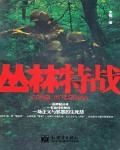Chapter 130 Reversal
On the battlefield in the city of Stalingrad, it was not only the Soviet army that needed to hold on, but also the German army. As the opposing party in the war, the German army also had an extremely difficult time.
On the same day that the army group command headed by Chuikov escaped from trouble, General Zeitzler, who had just replaced Halder as Chief of the German Army General Staff, made a suggestion to Führer Hitler.
Zeitzler received accurate information from the German intelligence department that the Soviet Union's large-scale reserve forces were gathering on the Don River line, which had posed a direct threat to the northern wing of the German Ninth Army. In order to consolidate the northern wing defense line, Zeitzler suggested that the Ninth Army retreat to the Don River bend line to build a solid position.
But such a suggestion was rejected by Hitler without hesitation. The order issued by the Führer was: German soldiers must defend wherever they go! This order is exactly the same as the Kremlin's order of "not retreating a single step".
The suggestion of retreat was rejected by the Führer, so Zeitzler had to make a second suggestion, which was to use superior forces in the near future to launch a large wave of offensives in the direction of Stalingrad to crush the Soviet resistance in the city. According to this plan, the German army would deploy 5 infantry divisions, 2 armored divisions and 2 coordinated engineer battalions at a time on a front less than 5 kilometers in front of the city, and launch an offensive against the Soviet defense positions in a high-density battle formation.
However, soon after the battle plan was drawn up, the Soviet spy network hidden in Berlin stole the entire plan and passed it to Moscow. As a result, Moscow not only learned about the German army's next offensive plan, but also learned that the German high-level officials had noticed Yuri, the young Soviet commander. In this battle plan, the German staff gave the remnants of the 62nd Army, which was temporarily commanded by Yuri, a very coquettish but untrue code name - "Yuri Arkhipovich Battle Group".
…
In November, the temperature in Stalingrad dropped sharply. In just two or three days, the weather seemed to have moved from early winter to deep winter. The temperature dropped by more than ten degrees, and the entire ice surface of the Volga River was frozen.
The ice on the Volga River caused great trouble to the Soviet troops defending Stalingrad. Of course, the sudden drop in temperature also posed a huge obstacle to the Germans attacking the city.
It was another early morning. Before the morning light rose, fluffy snowflakes had already fallen. This was the first snow in the Stalingrad area this year.
In the ankle-deep snow, Yuri, escorted by two guards, walked out of the bunker he had just moved into the night before. Facing the heavy snow, he walked towards the road filled with rubble and ruins more than ten meters away.
Behind and a few meters to the side of the three people, there was a group of people responsible for recording them.
Just a week ago, on the same day that the German Ninth Army launched a large-scale offensive towards the Volga River, a team of journalists from the West, accompanied by a military commissar, came to Stalingrad. They were ready to interview this huge battle that was ongoing and had already shown signs of victory.
This team of journalists is from the United States and is affiliated with Time magazine. The special issue they are producing is part of the report on Time magazine's Person of the Year this year, and it mainly introduces the situation of the Battle of Stalingrad. As an important commander of the Soviet army in the Battle of Stalingrad, the content about Yuri is naturally indispensable.
Moscow attached great importance to this interview, not only because the reporter was an important publication from a Western country, but also because this year's Time magazine's Person of the Year was none other than Comrade Stalin himself.
More than ten minutes ago, Yuri had already recounted the general situation of the Battle of Stalingrad to the members of the press corps. Now, he was recording some fragments of his daily life and extracting materials.
The reason why this group of journalists from the United States dared to enter Stalingrad during the war was not because these journalists were brave, but simply because the fighting in the city had been suspended and had been suspended for many days.
Since the beginning of November, when the German army launched a large-scale offensive and separated the Soviet troops in the city, there has been no high-intensity war in the Stalingrad area. In the past nearly ten days, apart from sporadic exchanges of fire, no large-scale conflict has occurred between the two sides.
Affected by various factors such as weather, logistical supplies, manpower and fighting will, the German army had lost the ability to continue the offensive in Stalingrad in mid-November, although they knew that it was likely that another offensive would be able to drive the Soviets in the city into the Volga River.
At this point, not to mention the Soviets or the Allies, even the Germans themselves knew that they had lost the battle. The only question now was when and how this defeat would come.
The Soviet counterattack is imminent, the Soviet reserve forces along the Don and Volga rivers have basically completed the assembly task, and the next phase of the Supreme Command's combat plan has also been formulated. Yuri has received a transfer order. After today's interview and filming, he will cross the Volga River and go to the Don Front Command to serve as the assistant commander of the Don Front.
The order to transfer Yuri from the Stalingrad front to the Don Front was personally issued by Comrade Zhukov, due to Rokossovsky's insistence. People who are familiar with the promotion process of Soviet commanders know that the position of assistant to the commander of the front is very critical, and it can be seen as a springboard to the commander of a combined arms army.
In fact, before this order was issued, Rokossovsky proposed that Yuri be appointed as the commander of the 9th Tank Army and that he be responsible for the reorganization of the 9th Tank Army. However, Rokossovsky's recommendation was rejected by the General Staff on the grounds that the 9th Tank Army had been severely damaged in previous battles and that a large number of equipment, including tanks, needed to be resupplied. Therefore, the commander in charge of the reorganization should be someone who is experienced and familiar with the logistics equipment department. After considering various factors, the General Staff appointed Pavel Ivanovich Batov.
Compared with the young Yuri, Batov was definitely an experienced commander. He joined the Soviet Red Army in 1918. Since then, he started as a soldier and was promoted to the army commander step by step. His resume was much more solid than Yuri's. In addition, Batov had a very close relationship with Rokossovsky and they had worked together for a long time. Therefore, Rokossovsky could not raise any objections to this candidate.
However, Rokossovsky was really optimistic about Yuri. Although his intention to promote him to the position of commander of the 9th Tank Army was not realized, Rokossovsky still made efforts. The position of assistant commander of the front was a compensation. In addition, in Rokossovsky's plan, he also planned to let Yuri take on the responsibility of reorganizing the 57th Army.
The 57th Army was surrounded by the Germans in the Kharkov Offensive at the beginning of the year and suffered heavy losses. The command, including the army commander Kuzma Petrovich Podlas, was almost completely wiped out. During the Battle of Stalingrad, although the 57th Army was still in place, its subordinate remnants were all fighting under the command of other armies.
Now, with the reinforcement of the reserve troops, the Supreme Command is ready to reorganize the army, fully restore its combat formation, and incorporate it into the combat sequence of the Don Front. Once the work of reorganizing the 57th Army is handed over to Yuri, then if nothing unexpected happens, he will definitely officially take up the position of commander of the army after the reorganization is completed. This will also be the first time that Yuri officially serves as an army-level commander.
With the dawn of , the Soviet Red Army's organizational system will inevitably undergo large-scale adjustments. This is inevitable, and the reason is very simple: once the German army encounters a setback at the gates of Stalingrad, the strength comparison between the Soviet Union and Germany will be completely reversed in terms of the battlefield situation in the central direction. In this direction, the German army will be at a disadvantage in terms of both manpower and weapons and equipment. Facing the upcoming winter offensive of the Soviet army, the German army is doomed to be unable to gain a foothold on the Russian plateau, and they will have to retreat to Ukraine. In other words, the front line will be pushed back to eastern Ukraine, and even back to the Dnieper River line. As a result, the formation of a campaign strategic corps in the eastern Ukrainian region will also be put on the agenda.
Since the outbreak of the Soviet-German War, for the Soviet Red Army, as the battlefield situation changed from the initial overall passivity to partial initiative, a large number of high-quality and capable military commanders have grown up with the progress of the war. These young commanders are active in all directions of the Soviet-German battlefield. Although their command experience may not be as rich as that of the German commanders, and their record may not be so perfect, they have matured compared to the early days of the war.
In order to make full use of these young but high-quality commanders and further promote their growth, the General Political Department and the General Staff of the Soviet Red Army, under the instruction of the Supreme Command, launched a planned "experience summarizing movement" throughout the army.
This campaign, which affected the entire Soviet Red Army, required that after each battle, the commanders of the participating troops, who were responsible for the operation and supervised by the chief of staff, had to answer a series of questions. Such questions included: How did you conduct reconnaissance? Where were your reserves deployed? What was your battle formation during the attack? How did you use engineers in complex terrain? And so on. Experience summaries like these would be disseminated to the entire army in the form of military newspapers as soon as they were made, for reference and study by every commander.



